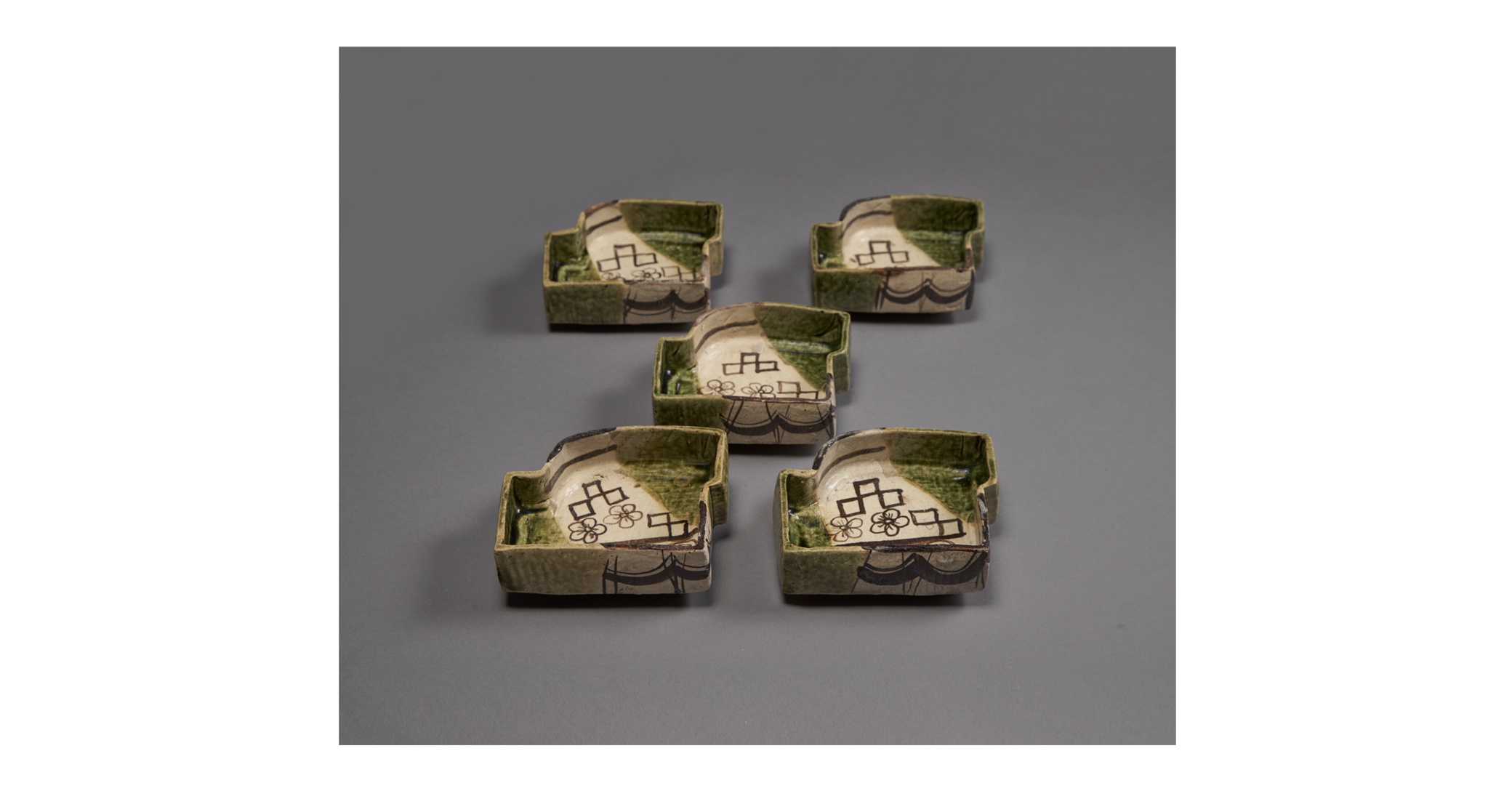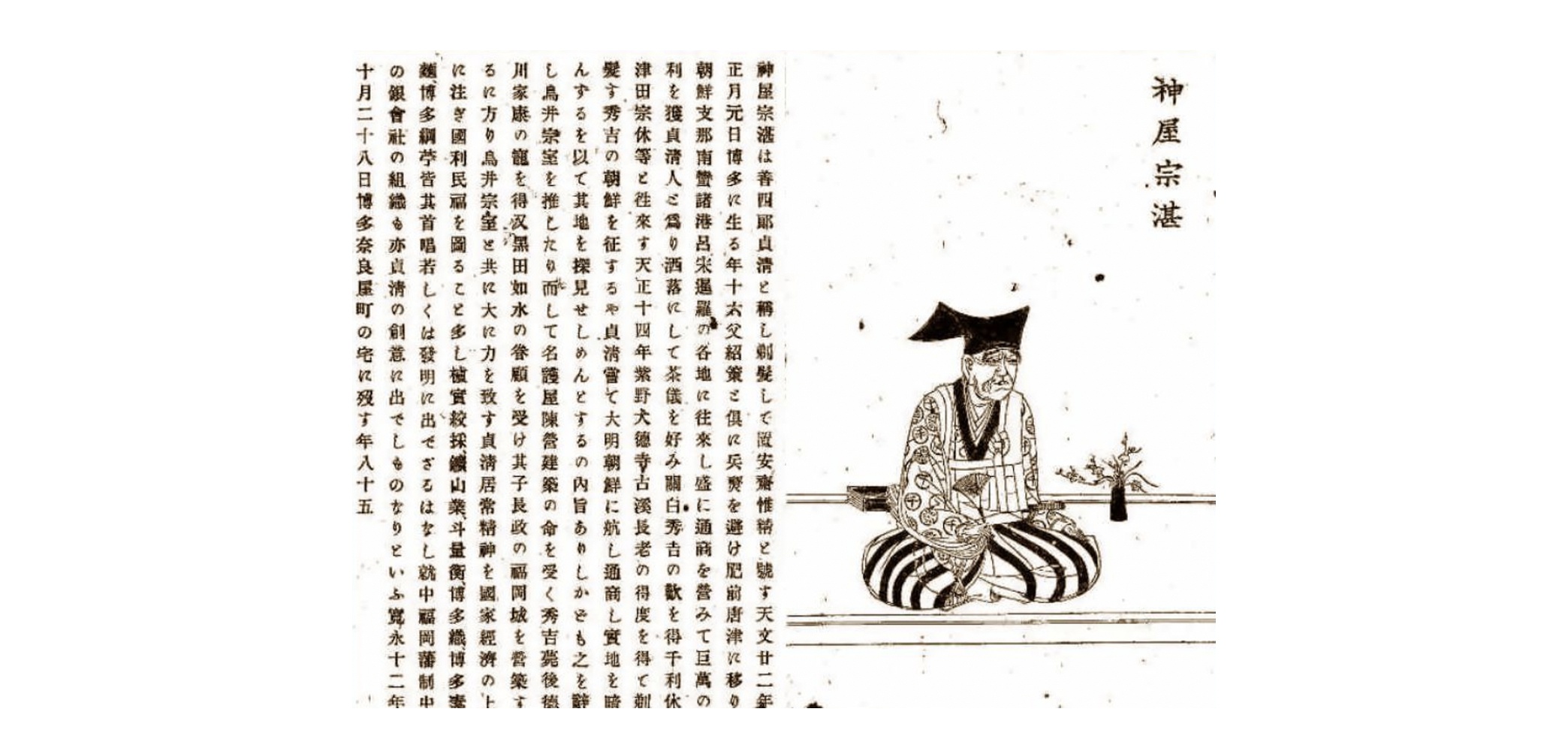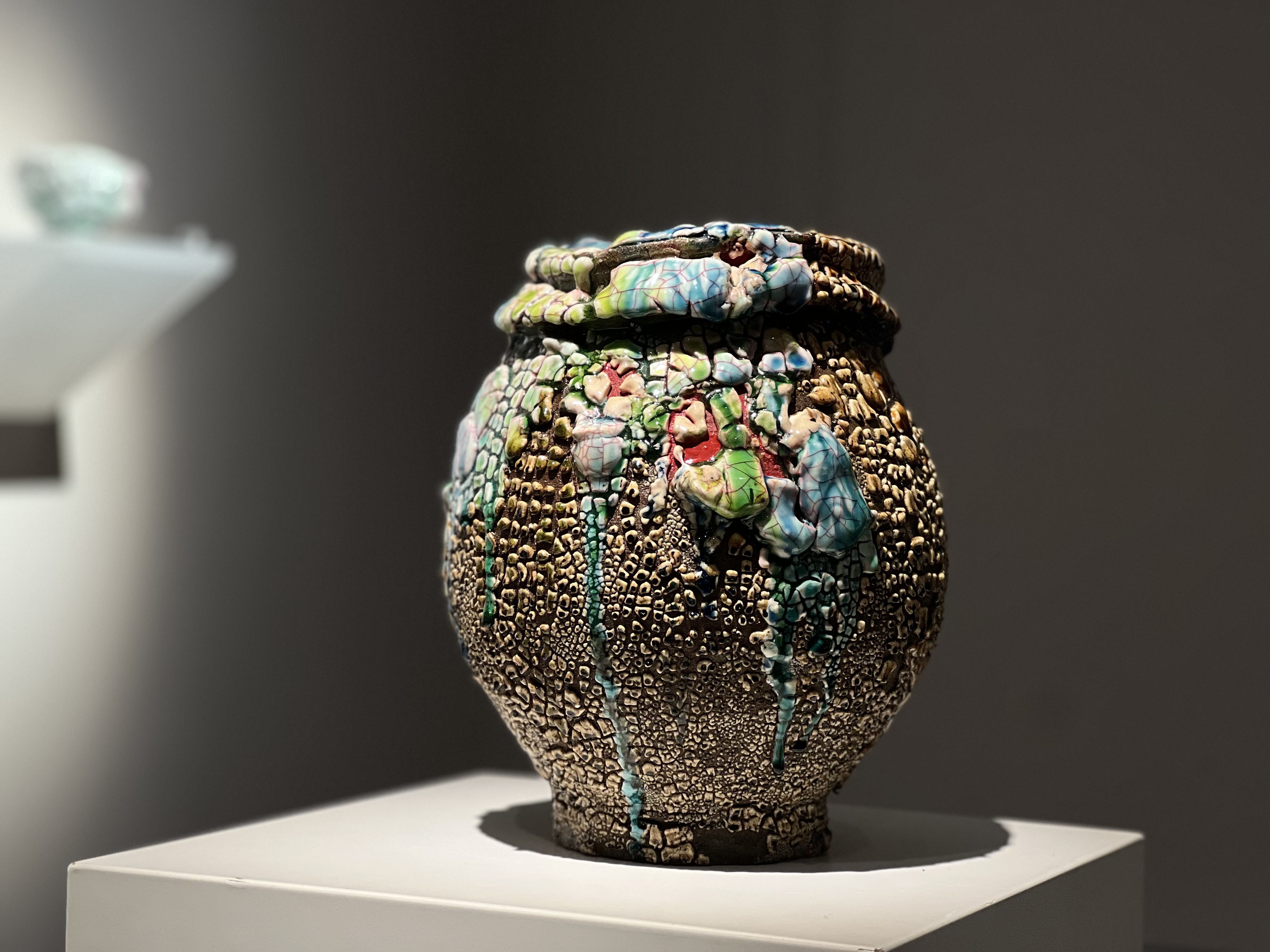
In March of this year, during New York's Asia Week, I found a set of “Mukoduke” utensils of Oribe ware went on display in an auction house. It got a higher bid than the estimated price. Those sets of Oribe, with a charm not immediately apparent, left me with questions and etched themselves vividly in my memory.
The history of Oribe ware blossomed during the Azuchi-Momoyama period. The pieces in the auction were of outstandingly beautiful tampan (the Oribe green glaze), painted in unexpected and expansive ways inherent to the early period of Oribe teaware history. Furuta Oribe (born Furuta Shigenari), one of the seven disciples who taught wabi-sabi philosophy from Sen no Rikyu, adhered to Rikyu's advice to "be different from the past and everyone." He forged a new path for developing chanoyu, tea ceremony culture, by developing Oribe ware.

Mino Ware, Oribe, Momoyama Period
Sotan Kamiya wrote the earliest record of Oribe in his diary on February 28th, Keicho 4 (1599). In Soutan’s Diary, he described an Oribe ware tea bowl as “Heugemono; eccentric, goofy and distorted" the first literary account of Oribe ware provided a glimpse into its cheerful character. Sotan, older than Furuta Oribe and associated with him and Rikyu, must have had intriguing thoughts when he first encountered Oribe ware. Perhaps he marveled at the surprises it brought and was fascinated by the cultural shifts.

Sotan Kamiya (1553-1635), His Biography
Oribe ware embodies vibrant green glazes, unexpected freedom, and adorable asymmetry, attracting notable tea enthusiasts throughout history. It is not only deconstruction and asymmetry, but the whimsical charm of Oribe continues to fascinate us today. Many pieces feature meaningful designs celebrating a bountiful harvest or evoking protective symbols. When the tea master enters the tea room with Oribe ware in hand, even in the dead of winter, the conversation is enlivened.

The recent exhibition by Kodai Ujiie showed a notable prevalence of works featuring Oribe glazes. His exploration of his ear shape and persistent fascination with irregularity align with Oribe's essence. The glaze's cracks and piercing techniques exhibited newfound power, bringing the shape and surface to life. Like Furuta Oribe, Kodai Ujiie is the contemporary artist entrusted with disrupting and evolving a traditional art form. We eagerly await how Kodai Ujiie's works will continue captivating us, preserving the new ceramic approach in art history.
References:
Sagawa Art Museum, "Oribe Furuta Exhibition" https://www.sagawa-artmuseum.or.jp/plan/2015/07/400.html
Yamanashi Prefectural Museum of History and Literature Yamaguchi Sodo Reference Room, Soutan Kamiya Image/Biography (2017)
Christie's, Asian Art Week (March, 2023), LOT no.34 "A SET OF FIVE MUKOZUKE"
